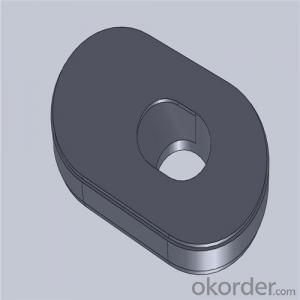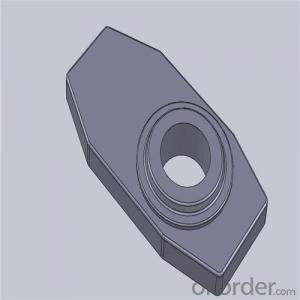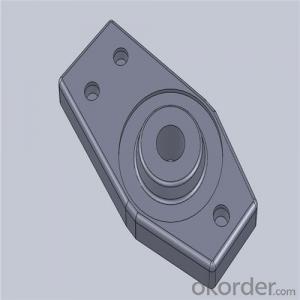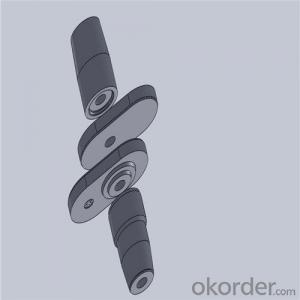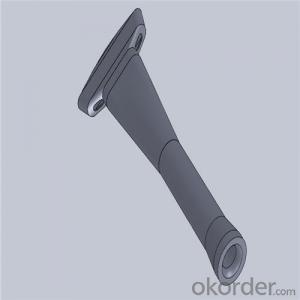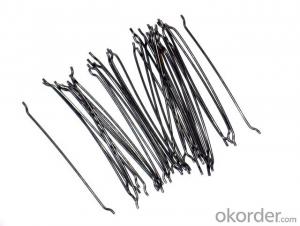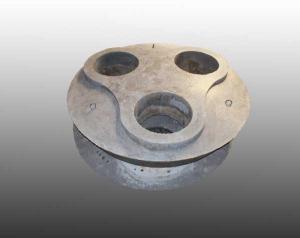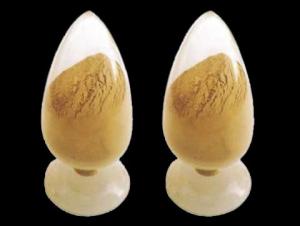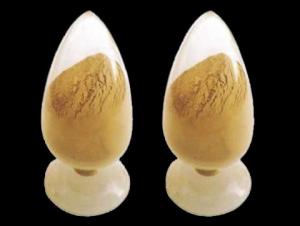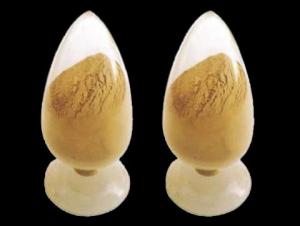High Performance&Temperature Ladle Slide Gate for Steel
- Loading Port:
- Shanghai
- Payment Terms:
- TT OR LC
- Min Order Qty:
- 100 pc
- Supply Capability:
- 1000 pc/month
OKorder Service Pledge
OKorder Financial Service
You Might Also Like
Quick Details for High Performance Refractory Ladle Slide Gate
| Place of Origin: | China (Mainland) | Shape: | Plate | Material: | Alumina Block |
| SiO2 Content (%): | N/A | Al2O3 Content (%): | 80-90% | MgO Content (%): | N/A |
| CaO Content (%): | N/A | Refractoriness (Degree): | 1770°< Refractoriness< 2000° | CrO Content (%): | N/A |
| SiC Content (%): | N/A | Model Number: | CS80 | Brand Name: | |
| Product name: | High performance refractory ladle slide gate | Model No.: | cs80 | Brand name: | CMAX |
| Quality: | Al-C or Al-Zr-C | Service life: | 4-6 heats | Apparent porosity: | 7% Max |
| Bulk density:: | 3.1 MIN | C.C.S: | 120MPA | MOQ: | 100 pcs for trial |
| Delivery time: | 60 working days upon receipt of deposit |
Packaging & Delivery
| Packaging Details: | Inner carton packing, outer wooden case suitable for long term sea shipping |
| Delivery Detail: | three months working days upon receipt of deposit |
Specifications
Surface flatness less than 0.05mm
High mechanical strength
Erosion resistance
Oxidation resistance
Thermal shock stability
Using the raw materials of tabular alumina, zirconia-corundum, carbon and other high-grade additives, after sintering to obtain characteristics of oxidation resistance, scour strength, erosion resistance, thermal shock resistance, shape stable and long service life, made our products the preferred materials for the large and medium-sized steel ladle, refining ladle, series of alloy steel ladle, and tundish. Our high performance sintering sliding gates include alumina carbon , Al2O3-ZrO2-C, etc, can meet the needs of different steel grade.
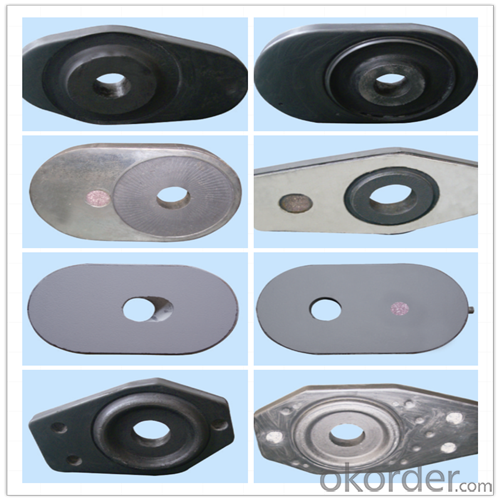
General Chemical Analysis for refractory ladle slide gate :
slide gate plate widely including Alumina carbon and Alumina Zirconia Carbon slide gate plate, MgO and MgO-spinel slide gate plate,nonoxides bonding slide gate plateand unburned slide gate plate.
Alumina -Zirconia-Carbon material
| Al-Zr-C Material | |||||
| Al2O3 | C | ZrO2 | Apparent porosity | Bulk density | C.C.S |
| (% minm) | (% minm) | (% minm) | (% max) | (gm./cc minm) | (MPa minm) |
| 85 | 3 | 5 | 7 | 3.1 | 120 |
| 85 | 3 | 4 | 7 | 3.1 | 120 |
Composite type: Al-Zr-C for working line, outer Al-C material
| Al-Zr-C & Al-C Material | ||||||
| Al2O3 | C | ZrO2 | Apparent porosity | Bulk density | C.C.S | |
| (% minm) | (% minm) | (% minm) | (% max) | (gm./cc minm) | (MPa minm) | |
| Inner side (Working face) | 85 | 3 | 4 | 7 | 3.1 | 120 |
| Outside | 90 | 3 | 0 | 9 | 3 | |

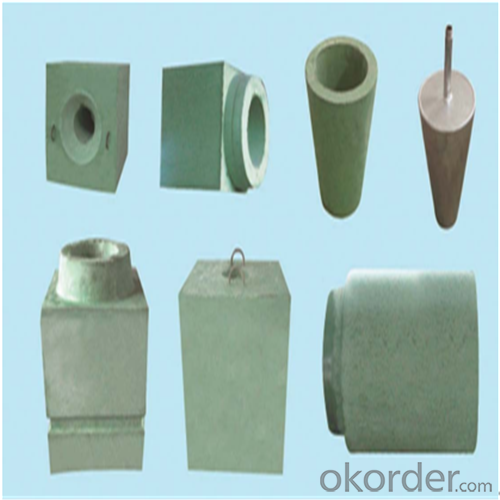
Other Products
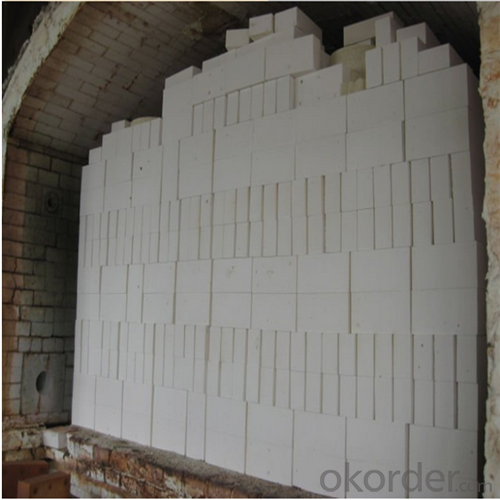
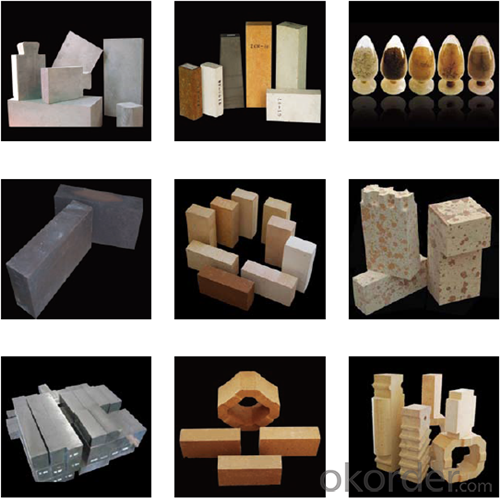
About us

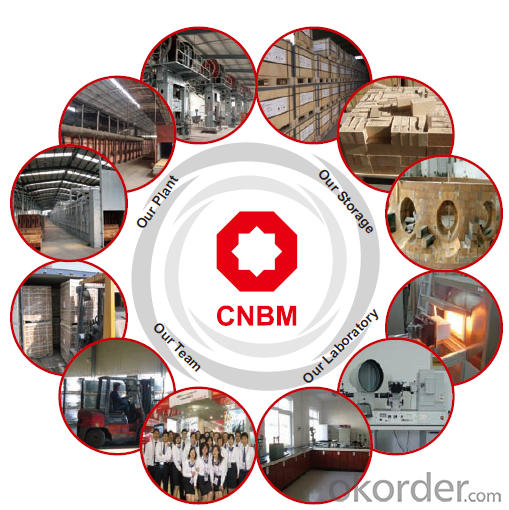
Sample is on your request.
Welcome to visit our factory~
- Q:How do monolithic refractories withstand mechanical stress in the iron and steel industry?
- Monolithic refractories in the iron and steel industry withstand mechanical stress primarily due to their composition and installation techniques. These refractories are made from a single, solid material, which provides them with excellent strength and resistance to mechanical pressure. Additionally, they are typically installed using specialized techniques, such as gunning or ramming, which ensure proper bonding and densification. These factors collectively enable monolithic refractories to effectively withstand the intense mechanical stress encountered in the iron and steel industry.
- Q:What are the common failure modes of monolithic refractories in iron and steel applications?
- Monolithic refractories are widely used in iron and steel applications due to their excellent thermal shock resistance, high temperature stability, and mechanical strength. However, like any other material, they are not immune to failure. There are several common failure modes associated with monolithic refractories in iron and steel applications. 1. Spalling: Spalling is one of the most common failure modes of monolithic refractories. It refers to the detachment of refractory material from the surface due to thermal cycling, mechanical stress, or chemical reactions. Spalling can occur due to mismatched thermal expansion coefficients between the refractory and the surrounding structure, leading to cracking and subsequent detachment. 2. Erosion: Erosion is another prevalent failure mode in iron and steel applications. It occurs when the refractory material is subjected to the erosive action of molten metal, slag, or gases. The erosion can be a result of the physical impact of the flowing metal or the chemical attack by corrosive slag components. Erosion leads to the loss of refractory material, decreased lining thickness, and compromised performance. 3. Corrosion: Corrosion is a significant failure mode in iron and steel applications, particularly in contact with aggressive atmospheres or molten metal. Corrosion can result from chemical reactions between the refractory material and the corrosive agents, such as oxides, sulfides, or alkalis present in the environment. It leads to the formation of corrosion products, which can weaken the refractory lining and reduce its lifespan. 4. Thermal shock: Monolithic refractories are exposed to extreme temperature fluctuations in iron and steel applications. Rapid heating or cooling can lead to thermal shock, causing cracking and failure of the refractory material. Thermal shock can occur due to uneven heating or cooling, sudden changes in temperature, or thermal gradients within the refractory lining. 5. Abrasion: In certain iron and steel applications, monolithic refractories can be subjected to abrasive wear. This occurs when the refractory lining comes into contact with solid particles, such as metallic oxides, slags, or raw materials. The repeated impact and rubbing action of these particles can cause erosion and abrasion of the refractory material, leading to its failure. To mitigate these failure modes, proper refractory selection, installation techniques, and maintenance practices are crucial. Regular inspection, repair of damaged areas, and application of protective coatings can help extend the lifespan and performance of monolithic refractories in iron and steel applications.
- Q:What is the role of monolithic refractories in blast furnaces?
- Monolithic refractories have a crucial function in blast furnaces, as they offer high-temperature resistance and excellent durability in the furnace's harsh operating conditions. Blast furnaces are utilized in the ironmaking process to transform iron ore into molten iron, and monolithic refractories are essential for lining the furnace's interior. Withstanding extreme temperatures is one of the main purposes of monolithic refractories in blast furnaces. The furnace's interior can reach temperatures as high as 2,500 degrees Celsius, and monolithic refractories are specifically designed to preserve their structural integrity and shield the furnace lining from thermal shock and erosion caused by these high temperatures. Monolithic refractories also provide insulation, preventing heat loss from the furnace. This is significant as it helps to maintain the desired temperature for efficient iron production. By minimizing heat loss, monolithic refractories contribute to energy conservation and improved overall furnace performance. Another critical role of monolithic refractories is to resist chemical attack from the molten iron and slag. The materials employed in blast furnaces, such as iron ore, coke, and limestone, undergo various chemical reactions during the ironmaking process. Monolithic refractories are engineered to withstand the corrosive effects of these reactions, ensuring a longer lifespan for the furnace lining. Furthermore, monolithic refractories offer exceptional mechanical strength and resistance to abrasion. The materials processed in a blast furnace, including iron ore and coke, can be abrasive. Monolithic refractories act as a protective barrier against this abrasive action, preventing damage to the furnace lining and extending its lifespan. In conclusion, the role of monolithic refractories in blast furnaces is to endure extreme temperatures, provide insulation, resist chemical attack, and offer mechanical strength against abrasion. These properties contribute to the efficient operation and longevity of blast furnaces, enabling the production of molten iron for various industrial applications.
- Q:How are monolithic refractories manufactured?
- Manufacturing monolithic refractories is a specific process that consists of multiple steps. The initial step involves selecting and preparing raw materials, typically comprising aggregates, binders, and additives. Aggregates are chosen based on their chemical and physical properties, while binders are utilized to hold the aggregates together. Additives are incorporated to enhance specific properties of the refractory material. Once the raw materials are chosen, they are thoroughly mixed in precise proportions to create a uniform mixture. This mixture is then blended using different techniques such as dry or wet mixing, depending on the desired characteristics of the final product. Following the blending process, the subsequent step involves shaping the refractory material. This can be accomplished through various methods such as casting, gunning, ramming, or spraying. The selection of the method is based on the specific application and requirements of the refractory. After shaping, the refractory material undergoes a curing process. This entails drying the material at a controlled temperature to eliminate any excess moisture and promote the development of desired properties. Lastly, the cured refractory material is subjected to high temperatures in a kiln. This firing process further strengthens the refractory and enhances its ability to withstand heat and other harsh conditions. In summary, the manufacturing of monolithic refractories entails meticulous selection and preparation of raw materials, precise blending, shaping, curing, and firing procedures. This guarantees the production of superior-quality refractory materials capable of withstanding the extreme conditions encountered in various industrial applications.
- Q:What are the advantages of using self-flow castables in the iron and steel industry?
- There are several advantages of using self-flow castables in the iron and steel industry. Firstly, self-flow castables offer excellent flowability, which means they can easily fill complex shapes and intricate molds. This allows for greater design flexibility and the ability to create more intricate and precise components. Additionally, the high flowability ensures that there are no gaps or voids in the casting, resulting in a higher quality product with improved mechanical properties. Secondly, self-flow castables have a high degree of homogeneity. This means that the composition of the castable is evenly distributed, resulting in consistent properties throughout the casting. This is particularly important for the iron and steel industry, where uniformity is crucial for achieving desired performance characteristics. Moreover, self-flow castables have a low water demand, which leads to reduced drying and curing times. This is beneficial in terms of production efficiency, as it allows for faster casting cycles and shorter overall production times. Additionally, the reduced water demand also leads to lower drying shrinkage, minimizing the risk of cracking or distortion during the curing process. Another advantage of using self-flow castables is their excellent thermal shock resistance. This is particularly important in the iron and steel industry, where materials are subjected to extreme temperatures. Self-flow castables have the ability to withstand rapid and drastic temperature changes without cracking, which ensures the longevity and durability of the cast components. Furthermore, self-flow castables have good abrasion resistance, which is essential in applications where the castings are exposed to abrasive materials or environments. The high resistance to wear and tear ensures a longer service life and reduces the need for frequent repairs or replacements. In conclusion, the advantages of using self-flow castables in the iron and steel industry include excellent flowability, high homogeneity, low water demand, good thermal shock resistance, and strong abrasion resistance. These benefits contribute to improved casting quality, increased production efficiency, enhanced durability, and reduced maintenance costs.
- Q:How do monolithic refractories improve the efficiency of ladle and tundish drying furnaces?
- The efficiency of ladle and tundish drying furnaces is enhanced by monolithic refractories in multiple ways. To begin with, monolithic refractories provide a high level of thermal insulation. These refractories possess low thermal conductivity, effectively minimizing heat transfer from the furnace to the surrounding environment. This insulation property helps to reduce heat losses and maintain a higher temperature within the furnace for a longer duration. Consequently, the drying process becomes more efficient as the heat is retained within the furnace, resulting in a decrease in overall energy consumption. Furthermore, monolithic refractories exhibit exceptional resistance to thermal shock. The rapid temperature fluctuations that occur during the heating and cooling cycles of the furnace can cause stress and cracks in the refractory material. However, monolithic refractories are designed to withstand these thermal shocks and maintain their structural integrity. This durability ensures a longer lifespan for the refractory lining, reducing the need for frequent repairs or replacements. Consequently, the furnace operates at optimal efficiency without the downtime associated with maintenance. In addition, monolithic refractories offer excellent mechanical strength and abrasion resistance. These properties are crucial in ladle and tundish drying furnaces, which are subjected to mechanical stresses and abrasive substances like molten metal and slag. The use of monolithic refractories ensures that the lining can endure these harsh conditions without suffering structural damage. This resistance to wear and tear increases the overall efficiency of the furnace, enabling it to operate uninterrupted for longer periods. Lastly, monolithic refractories provide greater design flexibility compared to traditional brick or tile refractories. They can be easily cast or gunned onto the lining surface, simplifying installation and repair processes. This flexibility allows the furnace to be customized and adapted to meet specific requirements, ensuring optimal heat distribution and efficient drying processes. In conclusion, monolithic refractories enhance the efficiency of ladle and tundish drying furnaces through their thermal insulation, resistance to thermal shock, mechanical strength, and design flexibility. By reducing heat losses, increasing durability, withstanding harsh conditions, and facilitating easy installation and repair, these refractories optimize the performance and energy efficiency of the furnaces.
- Q:How do monolithic refractories contribute to the overall efficiency of ladle slagging operations?
- Monolithic refractories play a crucial role in improving the overall efficiency of ladle slagging operations. Ladle slagging is a process that involves the removal of impurities from molten metal in a ladle before it is poured into molds or further processed. One of the key contributions of monolithic refractories is their ability to withstand high temperatures, which is essential in ladle slagging operations. The refractory lining of the ladle needs to be able to endure the extreme heat generated by the molten metal and slag, as well as the chemical reactions occurring during the process. Monolithic refractories, with their high thermal stability, prevent the lining from cracking or deteriorating, thus ensuring the integrity of the ladle and maintaining its efficiency. Additionally, monolithic refractories offer excellent resistance to chemical erosion and corrosion. During the ladle slagging process, the molten metal and slag can contain various impurities and aggressive chemicals, such as sulfur, phosphorus, and other oxides. These substances can attack and degrade the lining of the ladle, compromising its efficiency. However, monolithic refractories are designed to resist these chemical attacks, thereby extending the lifespan of the ladle and reducing the need for frequent repairs or replacements. Moreover, monolithic refractories provide good thermal insulation properties. Ladle slagging operations require precise temperature control to ensure the desired chemical reactions and efficient removal of impurities. The thermal insulation offered by monolithic refractories helps to maintain a consistent temperature within the ladle, preventing heat loss and allowing for optimized slagging conditions. This insulation also minimizes energy consumption and improves the overall energy efficiency of the ladle slagging process. In conclusion, monolithic refractories contribute significantly to the overall efficiency of ladle slagging operations. Their ability to withstand high temperatures, resist chemical erosion, and provide thermal insulation ensures the integrity and longevity of the ladle. By reducing the need for frequent repairs and allowing for precise temperature control, monolithic refractories optimize the slagging process, leading to improved productivity and cost-effectiveness.
- Q:How do monolithic refractories contribute to the overall efficiency of ladle cleaning operations?
- Monolithic refractories contribute to the overall efficiency of ladle cleaning operations by providing a durable and heat-resistant lining that can withstand high temperatures and chemical reactions. This lining helps to prevent the erosion and corrosion of the ladle, ensuring its longevity and reducing the need for frequent repairs or replacement. Additionally, monolithic refractories offer excellent thermal insulation, which helps to maintain the desired temperature of the ladle's contents and minimize heat loss. This ultimately improves the ladle's efficiency and reduces energy consumption during ladle cleaning operations.
- Q:How do monolithic refractories resist chemical corrosion in iron and steel applications?
- Due to their unique characteristics and composition, monolithic refractories demonstrate high resistance to chemical corrosion in iron and steel applications. This resistance is attributed to various factors. One crucial factor is the utilization of top-notch raw materials. Typically, monolithic refractories are crafted from high-alumina or alumina-silica aggregates, which possess excellent resistance to chemical reactions. These aggregates are carefully selected to withstand the harsh conditions encountered in iron and steel applications, including exposure to molten metal, slag, and various chemical compounds. Furthermore, the binders employed in monolithic refractories play a vital role in their resistance to chemical corrosion. Common binders encompass clay, calcium aluminate cement, or colloidal silica. These binders not only hold the refractory materials together but also provide extra protection against chemical attack. They create a dense and impermeable structure, preventing corrosive substances from penetrating the refractory lining. Additionally, monolithic refractories often incorporate additives that enhance their chemical resistance. These additives, comprising antioxidants, anti-spalling agents, and various compounds, further safeguard the refractory lining from chemical attack. They neutralize corrosive elements, inhibit the formation of harmful compounds, and reduce the overall corrosion rate. Moreover, the unique installation method of monolithic refractories also contributes to their resistance to chemical corrosion. Unlike traditional brick refractories, monolithic refractories are installed as a single, continuous lining. This eradicates the need for joints or gaps that could potentially serve as weak points for chemical penetration. The monolithic nature of these refractories ensures a tight and seamless lining, reducing vulnerability to chemical attack. In summary, the combination of high-quality raw materials, effective binders, and beneficial additives, along with the monolithic installation technique, endows monolithic refractories with exceptional resistance to chemical corrosion in iron and steel applications. This resistance enables them to endure the harsh conditions encountered in these industries, ensuring the durability and efficiency of the refractory lining.
- Q:What are the common testing methods used to evaluate the performance of monolithic refractories?
- To evaluate the performance of monolithic refractories, various commonly used testing methods are employed. These methods aid in determining the durability and suitability of refractory materials for different applications. Some of the frequently utilized testing methods include: 1. Thermal Conductivity Testing: This method gauges the heat conductivity of a refractory material. It assists in assessing the insulation properties and resistance to thermal shocks. 2. Compression Testing: This test measures the compressive strength of the refractory material. It provides insights into its ability to withstand external forces and pressure without fracturing or deforming. 3. Abrasion Testing: This method assesses the refractory material's resistance against wear and tear caused by abrasive forces. It helps evaluate its ability to endure erosive conditions and prolonged exposure to harsh environments. 4. Creep Testing: By measuring the deformation or sagging of the refractory material under high temperatures and constant loading, this testing method assesses its resistance to deformation and ability to maintain shape over time. 5. Thermal Expansion Testing: This test determines the expansion and contraction characteristics of the refractory material when exposed to different temperatures. It aids in evaluating its ability to withstand thermal cycling without cracking or fracturing. 6. Chemical Resistance Testing: This method evaluates the refractory material's resistance to chemical attacks, such as corrosion or erosion resulting from chemical reactions. It assists in determining its suitability for applications involving contact with corrosive substances. 7. Refractoriness Under Load (RUL) Testing: This test measures the refractory material's ability to withstand high temperatures while maintaining structural integrity. It aids in assessing its resistance to thermal stresses and suitability for high-temperature applications. These testing methods provide valuable data for evaluating the performance of monolithic refractories and ensuring their appropriateness for specific industrial applications. By considering these properties, manufacturers and users can make well-informed decisions regarding the selection and usage of refractory materials.
1. Manufacturer Overview |
|
|---|---|
| Location | |
| Year Established | |
| Annual Output Value | |
| Main Markets | |
| Company Certifications | |
2. Manufacturer Certificates |
|
|---|---|
| a) Certification Name | |
| Range | |
| Reference | |
| Validity Period | |
3. Manufacturer Capability |
|
|---|---|
| a)Trade Capacity | |
| Nearest Port | |
| Export Percentage | |
| No.of Employees in Trade Department | |
| Language Spoken: | |
| b)Factory Information | |
| Factory Size: | |
| No. of Production Lines | |
| Contract Manufacturing | |
| Product Price Range | |
Send your message to us
High Performance&Temperature Ladle Slide Gate for Steel
- Loading Port:
- Shanghai
- Payment Terms:
- TT OR LC
- Min Order Qty:
- 100 pc
- Supply Capability:
- 1000 pc/month
OKorder Service Pledge
OKorder Financial Service
Similar products
New products
Hot products
Hot Searches
Related keywords
